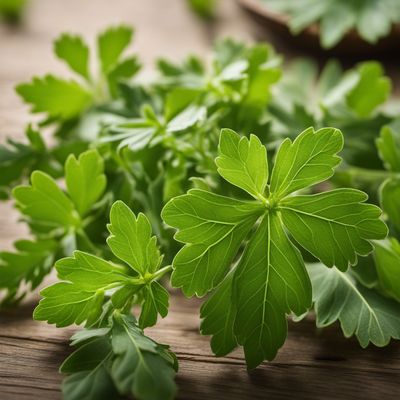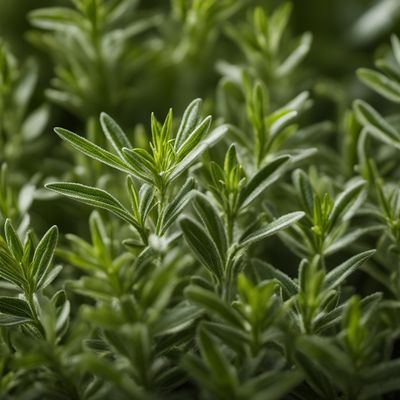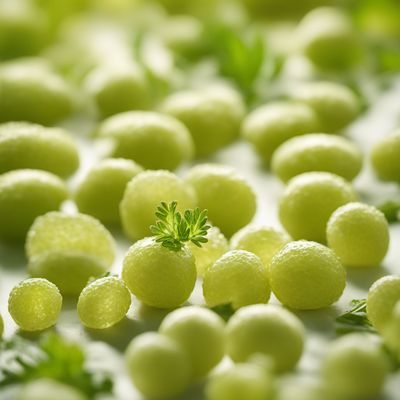
Ingredient
Tansy and related species, dry
The Golden Herb of Ancient Times
Tansy and related species, when dried, have a strong, aromatic scent reminiscent of camphor and a slightly bitter taste. They have small, feathery leaves that are bright green in color. When used in cooking, they impart a warm, herbaceous flavor with hints of citrus and spice. These dried herbs are commonly used in teas, infusions, and as a seasoning in various dishes.
Origins and history
Tansy and related species have a long history of use dating back to ancient times. They were highly regarded in traditional medicine and culinary practices. Tansy, in particular, was used by the ancient Greeks and Romans for its medicinal properties. It was believed to aid digestion and treat various ailments. In culinary traditions, these dried herbs were used to flavor dishes, particularly in European cuisines.
Nutritional information
Tansy and related species, when dried, are low in calories and fat. They contain essential oils, including thujone, which gives them their distinct aroma and flavor. These herbs also provide small amounts of vitamins A and C, as well as minerals such as calcium and potassium.
Allergens
Some individuals may be allergic to tansy and related species. It is recommended to avoid these herbs if you have known allergies to plants in the Asteraceae family, such as ragweed or chamomile.
How to select
When selecting dried tansy and related species, look for vibrant green leaves that are free from discoloration or signs of mold. The herbs should have a strong, pleasant aroma. If purchasing from a reputable supplier, ensure that the herbs are properly dried and stored in airtight packaging to maintain their freshness.
Storage recommendations
To maintain the quality of dried tansy and related species, store them in an airtight container away from direct sunlight and moisture. They can be kept for up to a year if stored properly. If you prefer to use fresh leaves, store them in the refrigerator wrapped in a damp paper towel for up to a week.
How to produce
Tansy and related species can be grown in a sunny garden or in pots. They prefer well-drained soil and thrive in areas with moderate temperatures. Plant the seeds or seedlings in spring or early summer, and provide regular watering to keep the soil moist. Harvest the leaves when they are fully grown, usually after 2-3 months of growth. Dry the leaves by hanging them upside down in a cool, dry place for several weeks.
Preparation tips
Dried tansy and related species can be used in various culinary applications. They can be brewed into a tea or infused into oils and vinegars to add a unique flavor to beverages and dressings. These herbs can also be used as a seasoning in savory dishes, such as soups, stews, and roasted meats. Additionally, they can be incorporated into baked goods, imparting a subtle bitterness and herbal aroma.
Culinary uses
Tansy and related species, when dried, are commonly used in traditional herbal medicine and culinary practices. They are often found in European cuisines, particularly in dishes from the Mediterranean region.
Availability
Tansy and related species are commonly available in regions with suitable climates for their growth. They can be found in Europe, North America, and other parts of the world where these herbs are cultivated or grow wild.
More ingredients from this category » Browse all

Fennel, dry
The Fragrant Spice of the Mediterranean

Lovage, dry
The Aromatic Herb: Lovage

Thyme, dry
The Essence of Thyme: A Versatile Herb

Savory, dry
Umami Delight

Bay leaves, dry
Aromatic Leaf of Flavor

Balm leaves, dry
The Soothing Herb: Balm Leaves

Sage, dry
The Timeless Herb: Unveiling the Versatility of Dry Sage

Hyssop, dry
The Aromatic Herb: Unveiling the Secrets of Dry Hyssop

Wormwoods, dry
The Bitter Herb: Wormwoods

Mints, dry
The Versatile Herb: Unlocking the Aromatic Power of Dry Mints

Rue, dry
The Bitter Herb: Unveiling the Secrets of Dry Rue

Lavender, dry
The Fragrant Herb: Lavender